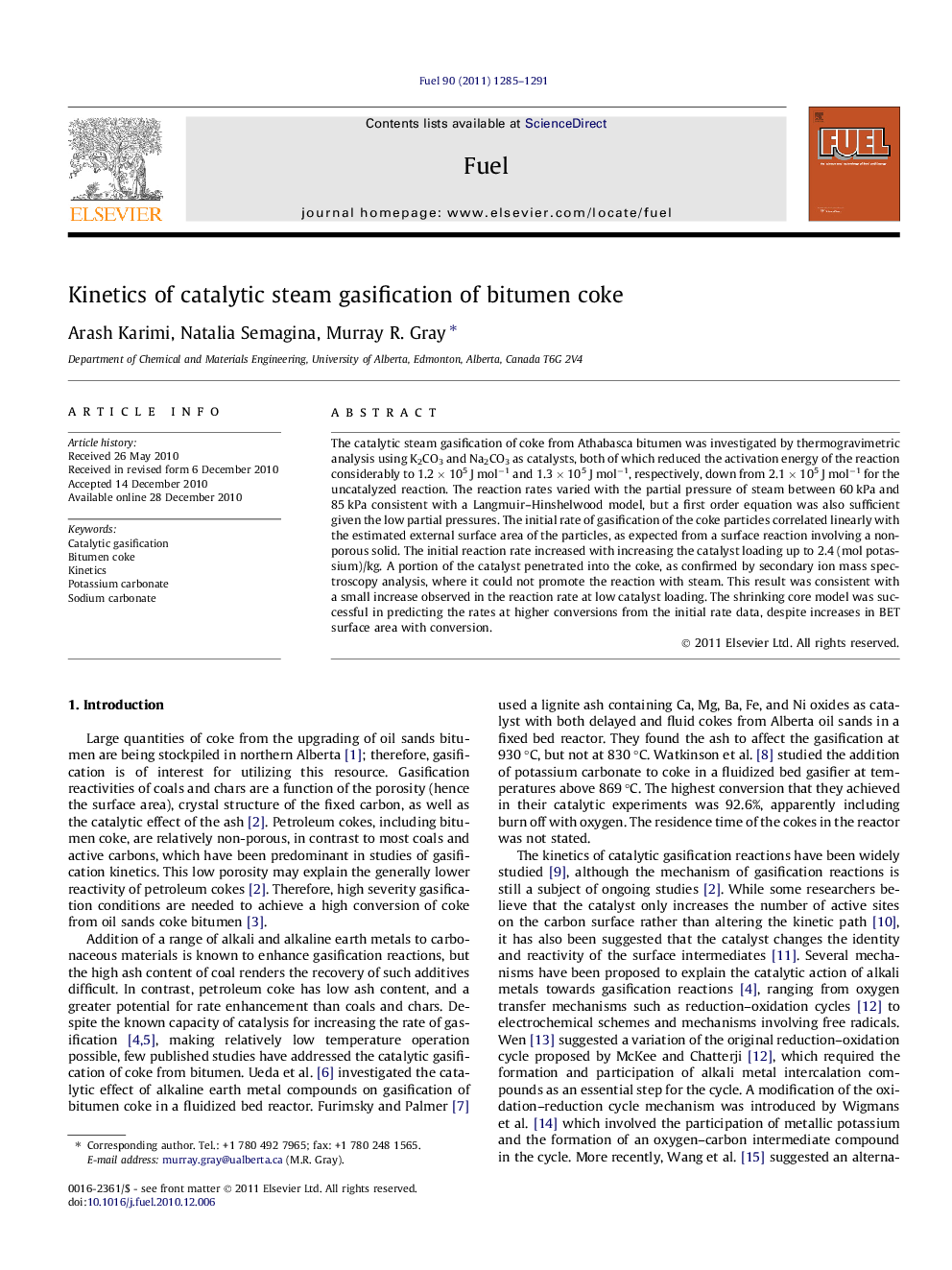| Article ID | Journal | Published Year | Pages | File Type |
|---|---|---|---|---|
| 10272720 | Fuel | 2011 | 7 Pages |
Abstract
The catalytic steam gasification of coke from Athabasca bitumen was investigated by thermogravimetric analysis using K2CO3 and Na2CO3 as catalysts, both of which reduced the activation energy of the reaction considerably to 1.2Â ÃÂ 105Â JÂ molâ1 and 1.3Â ÃÂ 105Â JÂ molâ1, respectively, down from 2.1Â ÃÂ 105Â JÂ molâ1 for the uncatalyzed reaction. The reaction rates varied with the partial pressure of steam between 60Â kPa and 85Â kPa consistent with a Langmuir-Hinshelwood model, but a first order equation was also sufficient given the low partial pressures. The initial rate of gasification of the coke particles correlated linearly with the estimated external surface area of the particles, as expected from a surface reaction involving a non-porous solid. The initial reaction rate increased with increasing the catalyst loading up to 2.4Â (mol potassium)/kg. A portion of the catalyst penetrated into the coke, as confirmed by secondary ion mass spectroscopy analysis, where it could not promote the reaction with steam. This result was consistent with a small increase observed in the reaction rate at low catalyst loading. The shrinking core model was successful in predicting the rates at higher conversions from the initial rate data, despite increases in BET surface area with conversion.
Related Topics
Physical Sciences and Engineering
Chemical Engineering
Chemical Engineering (General)
Authors
Arash Karimi, Natalia Semagina, Murray R. Gray,
